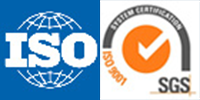News
What is the best wire for a heating element?
The best wire for a heating element depends on the specific application, operating temperature, environment, and desired properties such as durability, oxidation resistance, and cost. Below is a breakdown of the most commonly used heating element wires and their characteristics to help you choose the best one for your needs:
- Kanthal A1 Wire (FeCrAl Alloy)
- Composition: Iron (Fe), Chromium (Cr), Aluminum (Al).
- Max Temperature: Up to 1400°C (2552°F).
- Composition: Iron (Fe), Chromium (Cr), Aluminum (Al).
- Max Temperature: Up to 1420°C (2552°F).
- Properties:
- Excellent oxidation resistance due to the formation of a protective aluminum oxide layer.
- High electrical resistivity, making it energy-efficient.
- Durable and long-lasting in high-temperature environments.
- Applications: Industrial furnaces, kilns, toasters, ovens, and vaping coils.
- Advantages: Cost-effective, reliable, and widely available.
- Best For: High-temperature applications where oxidation resistance and durability are critical.
- Nichrome 80/20 Wire (NiCr Alloy)
- Composition: 80% Nickel (Ni), 20% Chromium (Cr).
- Max Temperature: Up to 1200°C (2192°F).
- Properties:
- Good oxidation resistance and high resistivity.
- Ductile and easy to work with.
- Stable performance at moderate to high temperatures.
- Applications: Hair dryers, space heaters, toasters, and other household appliances.
- Advantages: Easy to shape, good for lower-temperature applications, and cost-effective.
- Best For: Moderate-temperature applications requiring flexibility and ease of use.
- Nichrome 60/15 Wire (NiCr Alloy)
- Composition: 60% Nickel (Ni), 15% Chromium (Cr), 25% Iron (Fe).
- Max Temperature: Up to 1150°C (2102°F).
- Properties:
- Slightly lower resistivity and oxidation resistance compared to Nichrome 80/20.
- More cost-effective due to higher iron content.
- Applications: Similar to Nichrome 80/20 but for less demanding applications.
- Advantages: Lower cost while still offering good performance.
- Best For: Budget-friendly heating elements for moderate temperatures.
Key Considerations for Choosing the Best Wire
- Operating Temperature: Choose a wire that can withstand the required temperature range.
- Oxidation Resistance: Important for high-temperature applications in oxidizing environments.
- Durability: Consider the lifespan and resistance to thermal cycling.
- Cost: Balance performance with budget constraints.
- Ease of Fabrication: Some materials are brittle or difficult to shape.
- Environment: Consider whether the wire will be used in air, vacuum, or inert atmospheres.
Summary of Best Wires
- Kanthal A1: Best for high-temperature applications (up to 1400°C) with excellent oxidation resistance.
- Nichrome 80/20: Ideal for moderate-temperature applications (up to 1200°C) and ease of use.
For most general-purpose heating elements, Kanthal A1 or Nichrome 80/20 are the most popular and cost-effective choices.


